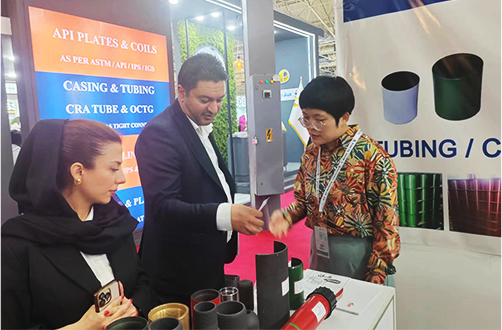- Afrikaans
- Albanian
- Amharic
- Arabic
- Armenian
- Azerbaijani
- Basque
- Belarusian
- Bengali
- Bosnian
- Bulgarian
- Catalan
- Cebuano
- Corsican
- Croatian
- Czech
- Danish
- Dutch
- English
- Esperanto
- Estonian
- Finnish
- French
- Frisian
- Galician
- Georgian
- German
- Greek
- Gujarati
- Haitian Creole
- hausa
- hawaiian
- Hebrew
- Hindi
- Miao
- Hungarian
- Icelandic
- igbo
- Indonesian
- irish
- Italian
- Japanese
- Javanese
- Kannada
- kazakh
- Khmer
- Rwandese
- Korean
- Kurdish
- Kyrgyz
- Lao
- Latin
- Latvian
- Lithuanian
- Luxembourgish
- Macedonian
- Malgashi
- Malay
- Malayalam
- Maltese
- Maori
- Marathi
- Mongolian
- Myanmar
- Nepali
- Norwegian
- Norwegian
- Occitan
- Pashto
- Persian
- Polish
- Portuguese
- Punjabi
- Romanian
- Russian
- Samoan
- Scottish Gaelic
- Serbian
- Sesotho
- Shona
- Sindhi
- Sinhala
- Slovak
- Slovenian
- Somali
- Spanish
- Sundanese
- Swahili
- Swedish
- Tagalog
- Tajik
- Tamil
- Tatar
- Telugu
- Thai
- Turkish
- Turkmen
- Ukrainian
- Urdu
- Uighur
- Uzbek
- Vietnamese
- Welsh
- Bantu
- Yiddish
- Yoruba
- Zulu
pup joint tubing
Understanding Pup Joint Tubing A Vital Component in Oil and Gas Operations
In the realm of oil and gas drilling, the efficiency and safety of operations heavily depend on the quality and functionality of the equipment used. Among these essential components is the pup joint tubing, a critical element in both drilling and production processes. This article explores the significance, design, and applications of pup joint tubing in the oil and gas industry.
What is Pup Joint Tubing?
Pup joint tubing refers to short sections of tubular pipes used in conjunction with standard pipe lengths to make up a desired length necessary for drilling or production operations. These tubes are typically less than 10 feet long and are manufactured to match the specifications of standard tubular sizes. Their primary function is to connect larger sections of pipe, allowing for more precise control over the depth and reach of drilling operations.
Design and Specifications
Pup joints are crafted from the same materials as regular casing and tubing, typically carbon steel or alloy steel, to ensure consistency in strength and reactivity. They are available in various sizes and weights, making them adaptable to different drilling and production setups. The design of pup joints also includes threaded ends, which allow them to be easily connected to other sections of tubing or casing with minimal effort. The threads are precision-engineered to provide a tight seal, preventing leaks and ensuring the integrity of the entire assembly.
Importance of Pup Joint Tubing
1. Flexibility in Operations One of the primary advantages of pup joint tubing is its flexibility. In the dynamic environment of oil and gas drilling, the need for adjustability is paramount. Pup joints enable drilling teams to respond swiftly to changes in depth requirements, formations encountered, and other operational variables.
pup joint tubing

2. Cost-Effectiveness Using pup joint tubing can lead to significant cost savings. By allowing operators to fine-tune their pipe lengths, they can avoid the unnecessary expense of extra piping or specialized equipment, thereby optimizing resource use.
3. Enhanced Safety The integrity of piping systems is pivotal to the safety and reliability of oil and gas operations. Pup joint tubing helps maintain this integrity by providing seamless connections, reducing the risk of leaks and failures that could compromise both worker safety and environmental standards.
4. Operational Efficiency The incorporation of pup joints into drilling operations enhances overall efficiency. Their lightweight and shorter design allow for easier transportation and handling on-site, which translates into quicker setup times and reduced operational delays.
Applications in the Oil and Gas Industry
Pup joint tubing finds its applications in various segments of the oil and gas industry. In drilling operations, they are used to adjust the length of drilling strings, facilitating better depth control and improving the overall performance of drill bits. Additionally, in production operations, pup joints are instrumental in connecting different elements of the production string, ensuring that hydrocarbons can be efficiently brought to the surface.
In intervention operations, pup joints also play a crucial role. They allow for the modification of existing installations without the need for complete overhauls, providing a less invasive method of maintaining or upgrading equipment.
Conclusion
Pup joint tubing may be a small component of the larger drilling and production framework, but its importance cannot be overstated. By enhancing flexibility, ensuring safety, and contributing to cost-effective operations, pup joints are vital to the success of oil and gas projects. As the industry continues to evolve, so too will the design and application of pup joints, reflecting the ongoing commitment to efficiency and innovation in the pursuit of energy resources.
-
Tubing Pup Joints: Essential Components for Oil and Gas OperationsNewsJul.10,2025
-
Pup Joints: Essential Components for Reliable Drilling OperationsNewsJul.10,2025
-
Pipe Couplings: Connecting Your World EfficientlyNewsJul.10,2025
-
Mastering Oilfield Operations with Quality Tubing and CasingNewsJul.10,2025
-
High-Quality Casing Couplings for Every NeedNewsJul.10,2025
-
Boost Your Drilling Efficiency with Premium Crossover Tools & Seating NipplesNewsJul.10,2025







